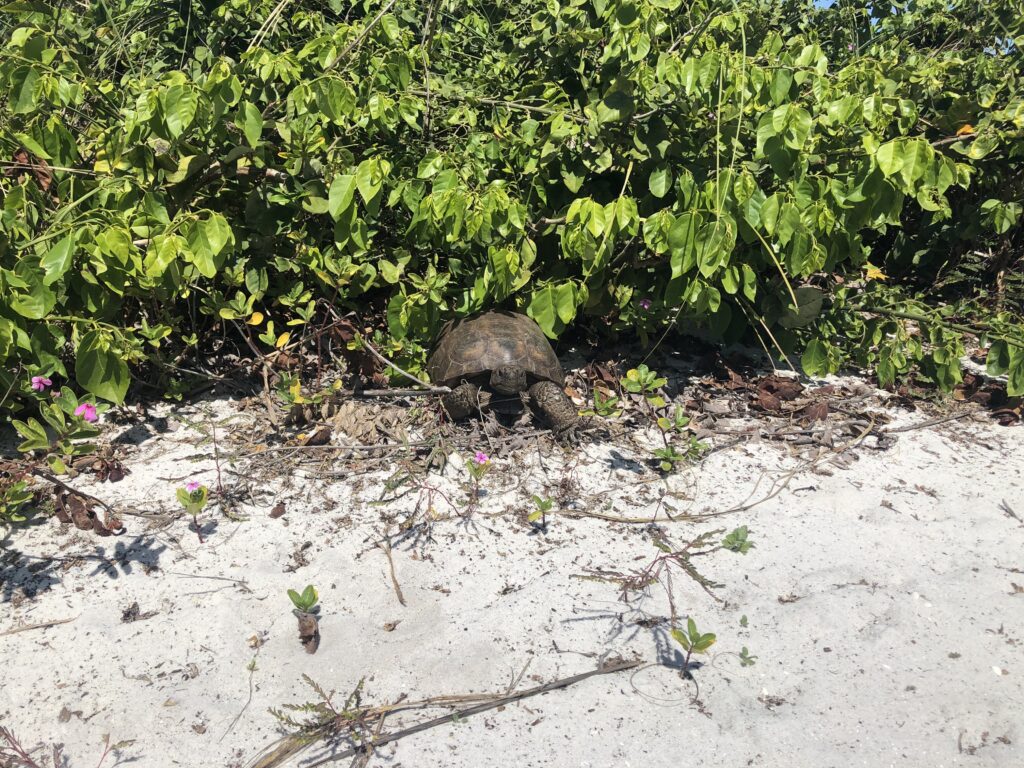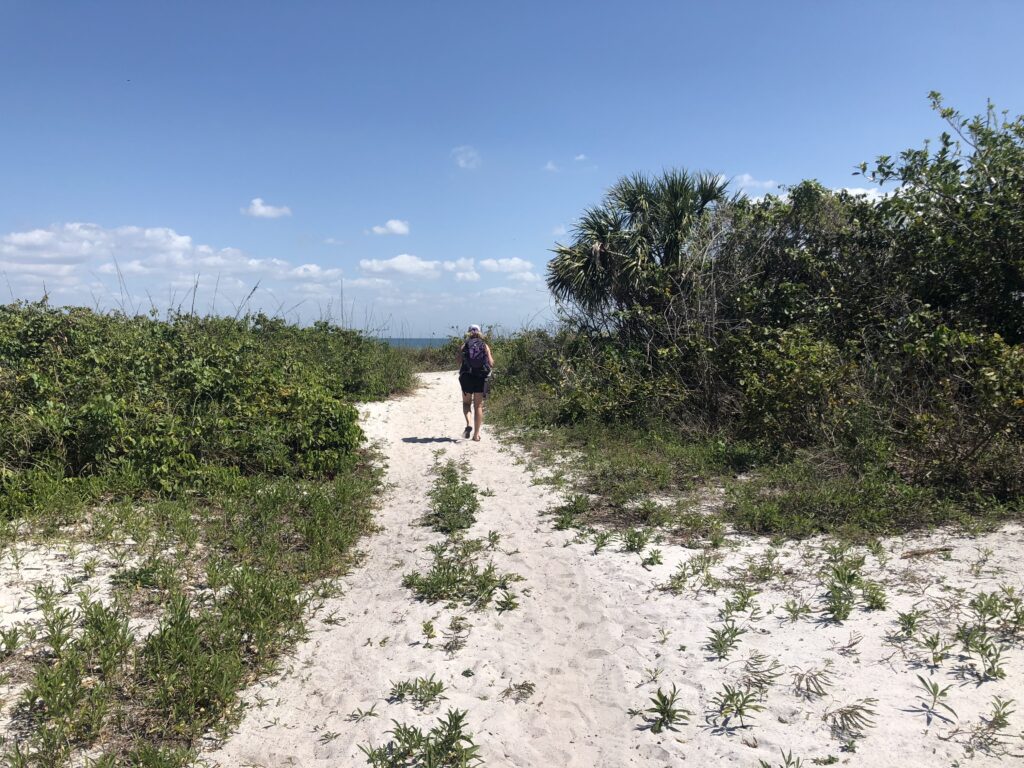Over spring break I spent some time on Egmont Key State Park off the coast of St. Petersburg, Florida. My surroundings were quite different than that of my phenology site’s in Burlington. First of all, it was 77 degrees Fahrenheit and sunny. Egmont Key is also a state park and a national wildlife refuge, designations that go far beyond that of a UVM natural area (which holds importance still). The area is very important to migratory birds, which have seen incredible decreases in habitat due to the development of areas around St. Petersburg and Tampa. Roughly 117 species of birds nest on the island, a far greater number than can be seen in Burlington.
The spot on Egmont Key that I observed was a combination of a sand due and cabbage palm forest. It was sort of right in the middle of where the inland cabbage palm forest turned into the beach. The area was much more aquatic than my site back in Burlington, but at the same time was also shaped by humans like my site in Burlington. In the early 1900s Egmont Key was used as a fort for the US military, and remnants of paths and development still exist on the island. Old brick paths are still used by visitors, and they also have uprooted the vegetation continuity. While I was observing this new phenology spot, I didn’t notice too many birds, but I did observe a “sand mystery” in comparison to the “snow mysteries” of Burlington. There was a gopher tortoise digging in the sand. We looked at each other for a little bit. It was a very cool wildlife encounter.


Egmont Key is very different than Redstone Quarry. Egmont Key seems to have a greater biodiversity and is a key area for many birds. But, it is also similar to Redstone Quarry in the way that it is used by people as a park and has been shaped by development.
Pictures are my own. The facts about Egmont Key came from a sign at the park (unclear how to site that).


Recent Comments